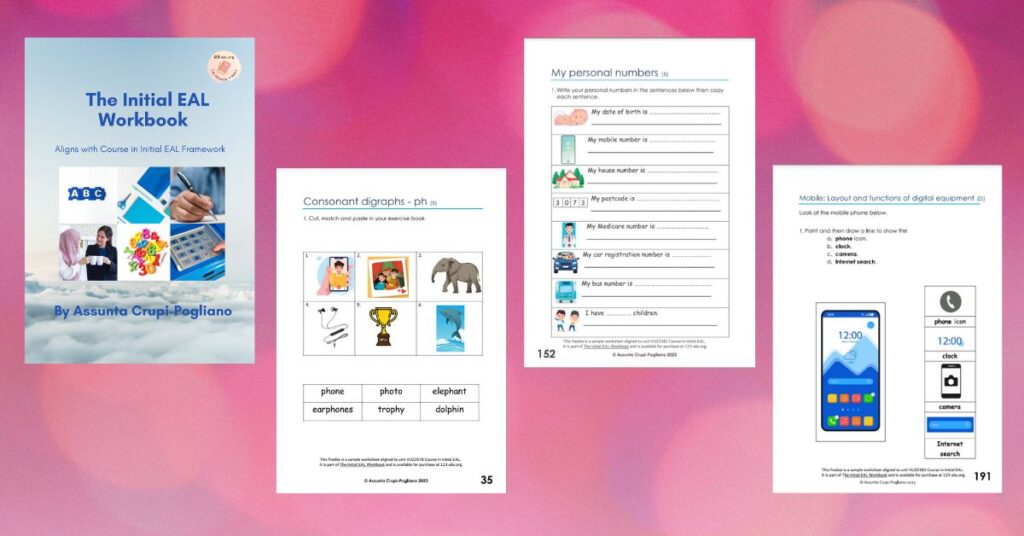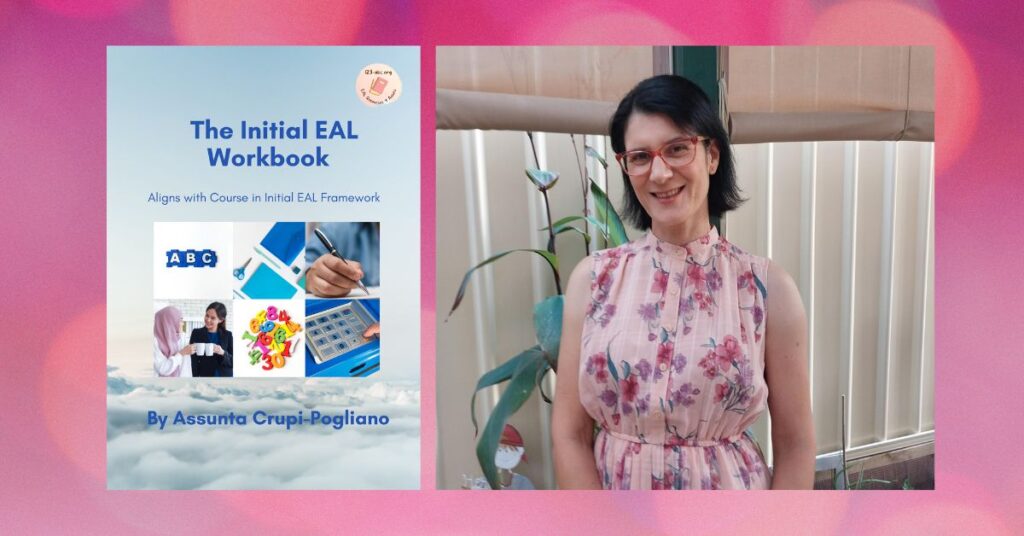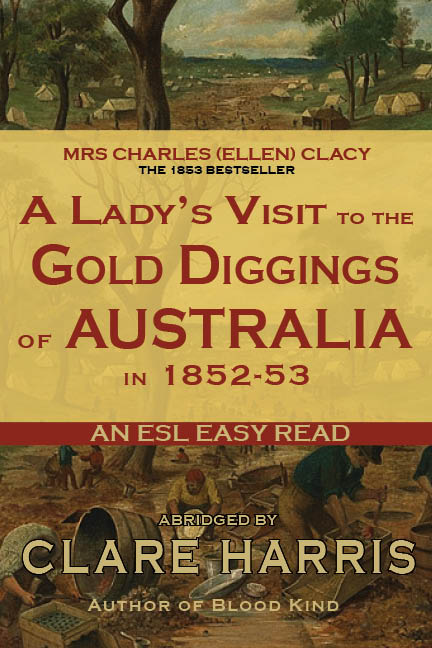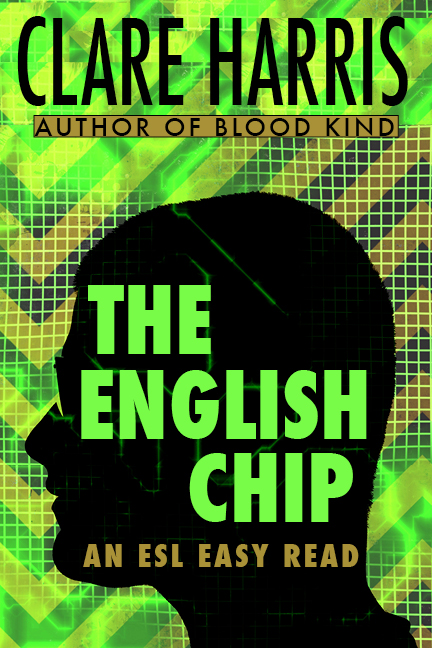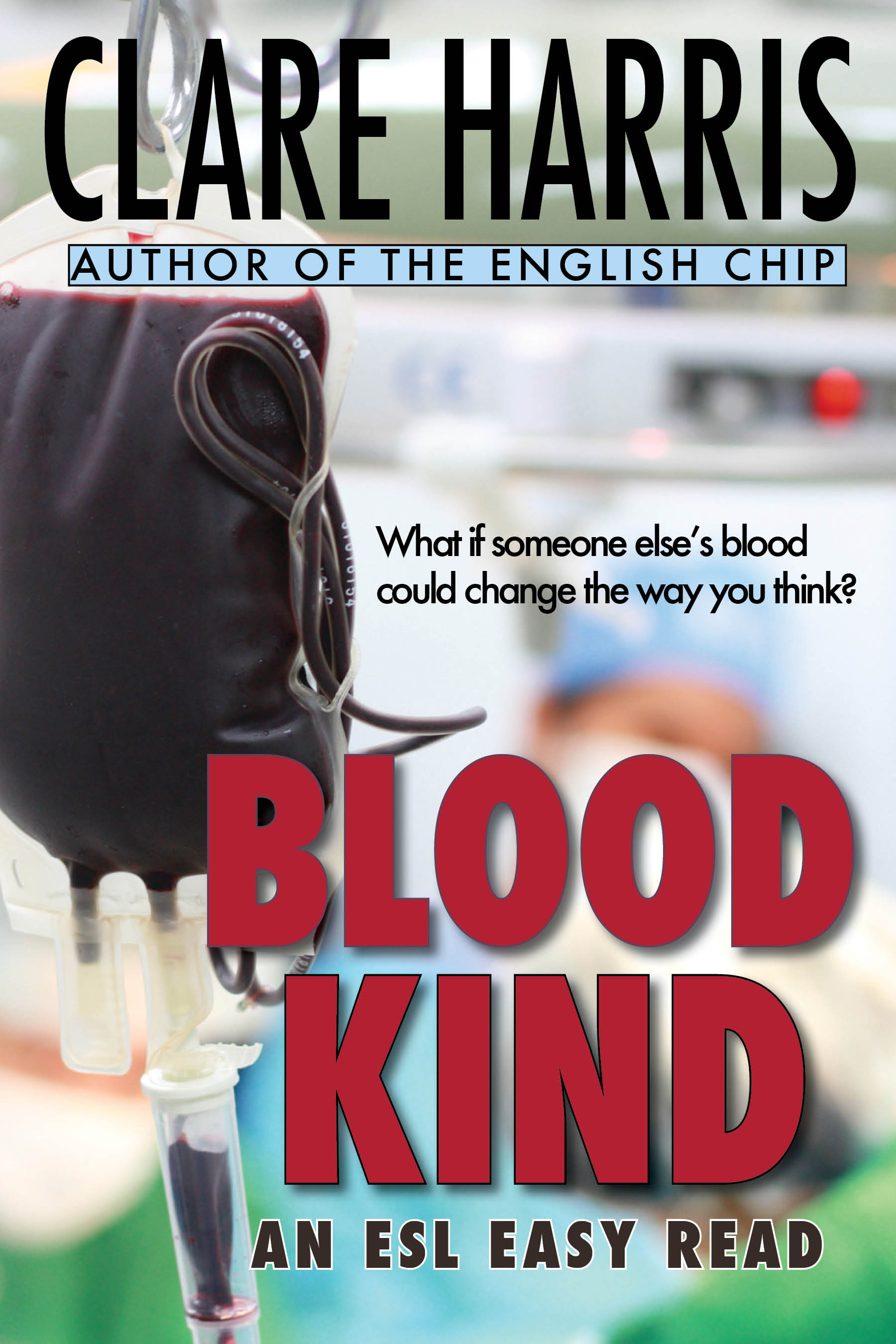Assunta Crupi-Pogliano has just launched her resource, The Initial EAL Workbook, designed for learners doing the Course in Initial EAL, and coming to grips with learning and with literacy. It’s an amazing 205 page book – that’s 195 pages of worksheets, covering all 67 of the performance criteria in the six units of the Course in Initial EAL. It features charming pictures, clear font and plenty of white space – all evidence of her years of experience. We caught up online and chatted about the workbook.
Assunta, what got you started on this huge task?
I was teaching Initial learners online during lockdown – remember in Melbourne we had two years of it. I created workbooks to send out to learners, but there were copyright restrictions and then you’d be online saying ‘Turn to page 13’ – and you know our students struggle with page navigation at the best of times.
I then thought how useful it would it be to have a PDF that you could use without the 10% copyright restriction. If students had a hard copy version of it and then as a teacher, you’d have a soft copy which you could share online, elicit responses and then write in the answers, all in real time.
So you created it! Did you know how big it would be?
When I first started, I was thinking I might create around 60 pages – but the whole thing just became a beast. 195 pages of worksheets, then there are the teacher notes. That’s what was needed to cover all the performance criteria of the units at Initial level. There’s so much these students have to learn.
How long did it take?
It took 18 months, but I didn’t keep a record of actual hours. I guess it was important for me not to calculate the hours I spent creating it, as I wanted it to be a labour of love. And of course, this was all done outside my working hours, teaching 4 days a week. I even started a new job during that time, so I was doing quite a bit of juggling.
Let’s just say it became a huge self-imposed undertaking. Not just the writing part, but the editing, getting it proofread, the peer review process, designing the website, creating and editing the videos. For so long I’ve been really frustrated by the lack of availability of suitable materials for this particular cohort. I guess in the end I’d had enough, so I started writing.
It features a lot of sequencing and scaffolding…
It does. It’s so important to give learners the chance to retrieve prior knowledge as this helps move it from their working memory to their long- term memory. In order to keep things in long term memory, students need to be given opportunities to retrieve that knowledge. Students need engaged exposure rather than just repeated exposure.
I like learners to have a maximum of 9-12 new words, repeated in different activities, but in a familiar pattern, so they can review and consolidate without being overwhelmed by lots of new vocabulary. It’s really important to avoid cognitive overload.
How does it reflect your own teaching style?
I use a lot of Total Physical Response. A lot of movement and activity. The worksheet is always the very last thing in a teaching sequence. I love hands-on stuff like the cut and match activities. Activities where learners can sit down and revise independently or get a friend to test them, rather than always needing the teacher. They’re socialising and consolidating their knowledge at the same time. It takes the pressure off the teacher and becomes more student-centred. By storing the cards in snap-lock bags, learners can practice the vocabulary repeatedly over a period of time, so there’s that idea of deliberate and spaced practice to aid retrieval and consolidate learning.
I notice you talk about ‘cut and paste in your notebook’…
Yes, I love activities that practise fine motor skills in different ways. They also take the pressure off learners having to always have a pen in their hands and thinking about handwriting and line placement. Of course, once learners can manipulate cards confidently, then they can paste the cards in their exercise books.
Supporting teachers as well as learners?
What happens in the Initial classroom is often underestimated. There is so much content to cover and up to now, there haven’t been a lot of 100% copiable resources. As a teacher, I find I’m a bit of a magpie, taking a bit from one book, a bit from another. With my workbook, I wanted to create something that teachers could just pick up and use; adding their own activities, their own songs and of course their own fun.
The workbook is like a backbone. It can also provide consistency, so teachers aren’t having to reinvent the wheel, making up new resources each time. I wanted to lighten the load on teachers, especially those who are new to the level, and to reduce the anxiety of ‘where do I start?’
I thank you on their behalf! Now let’s talk about performance criteria.
I mapped everything to the performance criteria. That’s why it’s such a chunky resource. I’ve also included a unit overview page telling learners what they’re going to learn. It may be that they can’t read it by themselves, but it will help the teacher explain the unit content and maybe someone at home can read it to them.
I like your work on digraphs, including the two ‘th’ sounds (voiced and unvoiced).
Thanks! You’ll notice I stick to a limited range of words, again to avoid cognitive overload. With the CH digraph I’ve stuck to the /tʃ / = CH spelling but I’ve added an additional page for when CH is the spelling choice for /k/school and /ʃ/ chef. Some students will only be able to handle the standard ch spelling/sound pattern, but others may be ready for the alternate spelling choices.
You talk about the need for learners to build confidence and skills…
Yes, it’s sad when I meet learners who tell me (through an interpreter) that ‘I am a bad student’. All it means is that they’ve had such difficult experiences of learning, and maybe no childhood school experience to even build on. It’s especially sad if they’ve been in a class that’s too challenging, and have felt like a failure. I want them to know they can succeed. Success builds on success. It’s so wonderful to see them experience success in the classroom. If you keep reviewing work in different ways, by the time they reach the worksheet, they’ll feel confident and ready to attempt the task.
What were the challenges of the project?
I’m a teacher. I didn’t have website experience. I don’t have marketing experience. I don’t have anyone working with me, it’s just me. Plus I’m not used to having to promote myself. I’ve put my heart and soul into this project and now I feel I really need to get it out there and show people it exists.
Have you had support from other teachers-turned-writers?
Absolutely. There are people I’ve reached out to, like Lauren Piovesan at ESL Reads and Bernard Miles at English Express, and they’ve both been really encouraging and supportive, but it’s quite a small club. I know there are so many teachers out there who create great resources, but don’t get any recognition.
True. So, if people want to see your work, where can they go?
I have a website (which I created myself, so a whole new area of learning for me). It has free sample pages in the Resources section, so you can get a flavour of my work. There are also some short videos in the Video Support Guide, as an alternative to the written teacher notes at the start of the workbook. (http://123-abc.org, best viewed on Chrome).
Can we make modifications to the pdf?
Of course. You can customise the pages for learner use, for example with your own travel card information. The digital media unit has the Melbourne Myki card and machine. You could edit those particular pages yourself, or you could simply discuss it and ask learners to cross out or paste in the local version of the travel card.
What happens when the EAL curriculum is updated?
I’m expecting that there won’t be too many changes at this level, but who knows? Once we have the new curriculum, I’ll update the relevant pages of the resource. Anyone who has already purchased will receive a notification once any additional material becomes available. People don’t need to hold off from purchasing, thinking that the resource will be superseded.
I’m embarrassed to ask, but…are you planning work on anything else?
You know, when I started this, I had no idea how huge it would be. At the moment, I just want to focus on getting this out there, letting people know it exists. In the future, maybe I might create some smaller units of work, maybe on topics like public holidays.
Well, thank you, Assunta, for your time today – and also for all your hard work and creativity. I’m not teaching this level at the moment, but I’ve been told that the Workbook is very useful and very level-appropriate! Wishing you great success with it!



